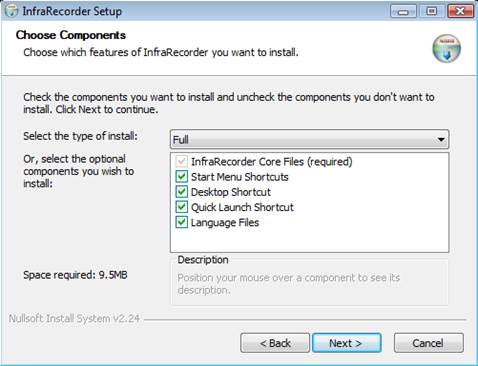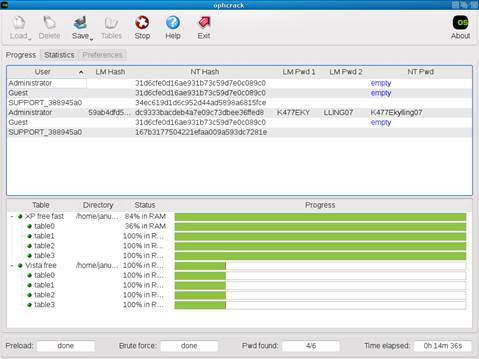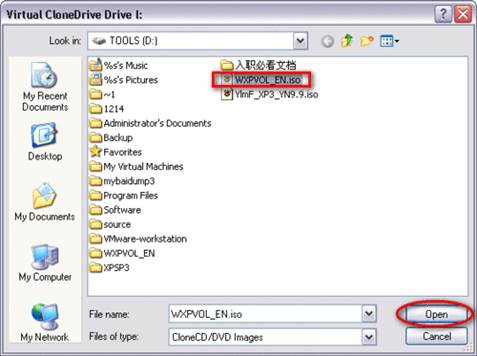We says rip and mount disc images to
keep the original discs safe
Recently, I found myself on the move with a
few hours to spare. What about a nice session of my favorite game? The disc,
however, which must be in the drive on my laptop for the game to play was at
home in its jewel case. What I needed was a copy of the CD on my laptop’s hard
drive that would be treated as the real thing?

Keeping
your discs as ISO images is immensely useful, not just for the convenience of
having your installation media wherever you go
Keeping your discs as ISO images is
immensely useful, not just for the convenience of having your installation
media wherever you go. If something happens to your original media a rogue
child decides to interface your keys with our copy of Microsoft Office, for
example – you’re covered, because you’ll have a carbon copy of the original
ready to burn to another disc or mount and run straight from your PC. Backing
up your media for personal, use won’t get you into any legal trouble either,
but obviously you shouldn’t distribute ripped discs.
Step-by-step: Rip and mount disk images
Take a close look at your system and
identify any resource hogs
1.
Download an ISO First, we need an ISO file to practice on. Let’s make it something
useful; the Ophcrack password recovery tool can help you out in times of
inadvertent lockout and it comes in the form of an ISO image. Download the
LiveCD for your system from http://ophcrack.sourceforge.net
and save to a convenient folder.

The
Ophcrack password recovery tool can help you out in times of inadvertent
lockout, and it comes in the form of an ISO image
2.
Prepare a DVD-RW
Before we can use a DVD-RW for the first time, we must prepare it. To get
started, put the disc in your computer’s DVD drive and right-click it in
Windows Explorer. If it’s new, select ‘Format’ and click ‘Start’ on the
subsequent window. If it has been used before, select ‘Erase this disc’ and
click ‘Next’.
3.
Burn in Windows 7
If you’re running Windows 7, burning an ISO file to a bootable disc is
simplicity itself. Open Windows Explorer and right-click the ISO file in the
downloads folder. Select ‘burn disk image’. Up pops the Windows Disc Image
Burner. Put the DVD in the drive and select ‘Verify disc after burning >
Burn’.
4.
Install InfraRecorder If you’re using either Windows XP or Windows Vista, download
Infrarecorder from SourceForge (http://bit.ly/zS4p).
Run the executable and select your language. Click ‘Next’ and agree to the
license, then click ‘Next’ again to accept a full installation. Click
‘Install’.

If
you’re using either Windows XP or Windows Vista, download InfraRecorder from
SourceForge
5.
Burn in Windows XP or Vista To burn the ISO in a version of Windows earlier than 7, first run
Infrarecorder. Click ‘Actions > Burn image’ and select the ISO file. The
default settings should be fine, so simply click ‘OK’ to begin burning the ISO
to the disc. This will take about five minutes, after which the disc drive
should pop open.
6.
Boot the ISO You
can now test the recording of the ISO file to make sure that it will boot up.
To do so, simply put the disk in the drive and reboot the computer. Ophcrack
should load and run, eventually displaying its tools. After you’ve completed
the boot, you can simply switch the computer off, reboot and remove the disc to
go back into Windows.

Ophcrack
should load and run, eventually displaying its tools
7.
Reading an ISO
Infrarecorder can rip the ISO image from a disc you own to your computer’s hard
drive, ready to be mounted later on. To do this, click the ‘Read disc’ icon.
Now insert the disc and enter a path and name for the ISO in the ‘Image file
input’ box. Click ‘OK’ and if the disc is not copy protected, Infrarecorder
will create the ISO.
8.
Install Virtual CloneDrive To mount the ripped ISO, we need Virtual CloneDrive, which you can
download from http://bit.ly/zS4p. Run the
executable to install and Virtual CloneDrive will ask your permission to
install a virtual device driver as it installs. Click ‘OK’ to agree and continue.
When complete, click ‘OK’ to finish.
9.
Mount the ISO
When you’re ready to mount an ISO using Virtual CloneDrive, open the folder
containing the ISO and right-click the file. Select ‘Mount (Virtual CloneDrive
E:)’. After a couple of seconds a new hard disk should appear in Windows
Explorer. If you expand this, you should be able to see the files as if they
were stored on a real drive.

When
you’re ready to mount an ISO using Virtual CloneDrive, open the folder
containing the ISO and right-click the file
10.
Extra virtual discs Virtual CloneDrive can handle more than one virtual disc at a time.
This is convenient if you have many discs that must be in the DVD drive before
their associated apps will work. Virtual CloneDrive adds an icon to the System
Tray. Right-click it and select ‘Settings’. Use the pull-down list to select
the number of drives you need.
11.
Auto-mount images
It’s easy to forget to mount your images before attempting to use them. To
avoid this situation, Virtual CloneDrive has a great feature that will
auto-mount the images you currently have mounted the next time Windows boots
up. To do so, right-click the System Tray icon, select ‘Settings and ensure
‘Automount last image’ is selected.
12.
Improve network performance If you store your data on a dedicated server, you might notice a
serious degradation in data access times for the image. This is because by
default the Data is not buffered on your computer. To change this, right-click
the Virtual CloneDrive icon, select ‘Settings’ and click the ‘Buffered I/O’
tick box. Re-mount the image to continue.
13.
Swap mounted ISOs
As a convenience, if you’ve previously mounted an ISO, you can quickly re-mount
it in place of a currently mounted image. To do so, right-click the virtual
drive and rest the mouse over the VCD entry. At the bottom of the sub-menu is a
list of previously mounted images. Select one and it will be mounted in place
of the current image.
14.
Unmounts images
It’s also useful to be able to unmounts virtual disks as you go. You can do
this by right-clicking the mounted virtual image in Windows Explorer and select
the entry on the menu that begins ‘VCD’ followed by the path to the image. On
the sub-menu, click ‘Un-mount’. After a few seconds the drive should disappear.